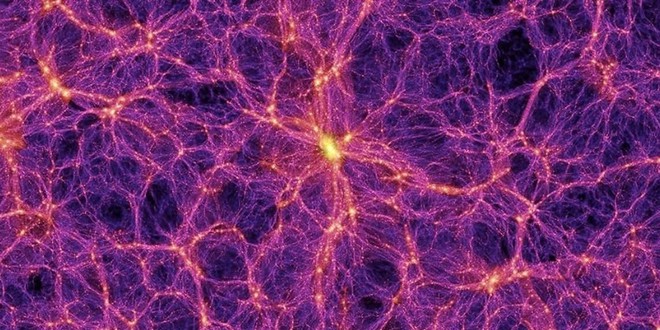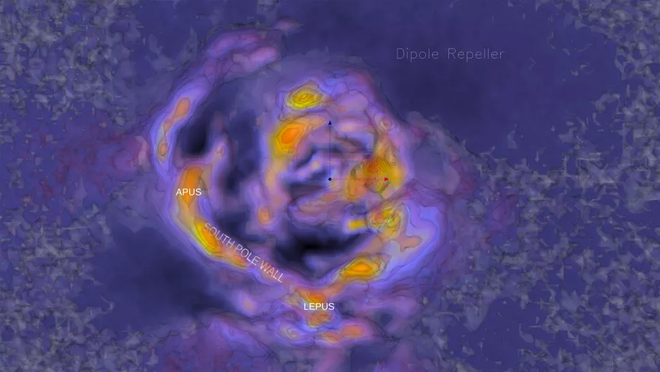Astronomers discovered the South Pole Wall, a cosmic structure up to 1.3 billion light-years across
- Tram Ho
The universe does not just contain scattered galaxies here and there on a still expanding ballooning spacetime. On close observation, we discover new structures, many of which are clusters of galaxies bound together by the gravitational force emanating from individual galaxies.
Astronomers have just discovered such a structure when observing the skies of the Southern Hemisphere. It is a collection of galaxies, the width of which is up to 1.37 billion light years; The team called it the South Pole Wall.
Science knows what we’re looking at: The South Pole Wall is one of the largest structures ever discovered by humans, a galaxy filament, the largest structure the Universe knows – a set of galaxies forming the border between the gaps in the Universe. Because it is a “border”, scientists conveniently named it “the wall”.

Larger walls have been discovered, such as the Great Wall of the Great Hercules-Corona with a width of 9.7 billion light years. But the South Pole Wall has its own remarkable features: it is very close to the Milky Way, only 500 million light-years away. In other words: this is the largest structure we have ever discovered in the “around the house” area.
There is a reason for this late discovery: The Antarctic Wall is hidden after what astronomers call the Avoiding Area, or the Galaxy Hidden Area – a space filled with gas and dust Universe and stars. It is so bright and thick that it blocks our view to the sky hidden behind the Avoiding Area.
So how do scientists find the South Pole Wall? Basically, they rely on the way galaxies move through space.

Illustration South Pole Wall.
A team of researchers led by researcher Daniel Pomarède uses a data set called Cosmicflows-3, which contains calculations of the distances of 18,000 galaxies. By redshift measurements – elements that appear when electromagnetic radiation from an object has an increased wavelength, or that object becomes redder when viewed, they find out the speed at which an object is move in space.
Last year, another group of scientists used Cosmicflows-3 to calculate another parameter called ” peculiar velocity, ” which is the relativity between the speed and motion a galaxy produced by the universe is constantly expanding.
Having two name elements, the team calculated the relative motion between the two galaxies, and these motions show that a giant structure is using its gravity to influence the surrounding galaxies. around. Algorithmically, the team relied on the motion to create a three-dimensional image of the Antarctic Wall, even when it was obscured by the Avoiding Area.
We haven’t identified all the areas that make up the South Pole Wall, so it’s likely that this structure is bigger than we estimated. Scientists are trying to determine the exact size of the wall. By determining the magnitude and its influence, we can determine how quickly the area of the Universe around us expands. Besides, this is also a historical witness that can tell us the evolution of the Milky Way.
Eagerly waiting to see what researchers will uncover the mysteries that the Antarctic Wall, a gigantic structure lurking behind a “mist” of dust and gas, hides.
Refer to ScienceAlert
Source : Genk
